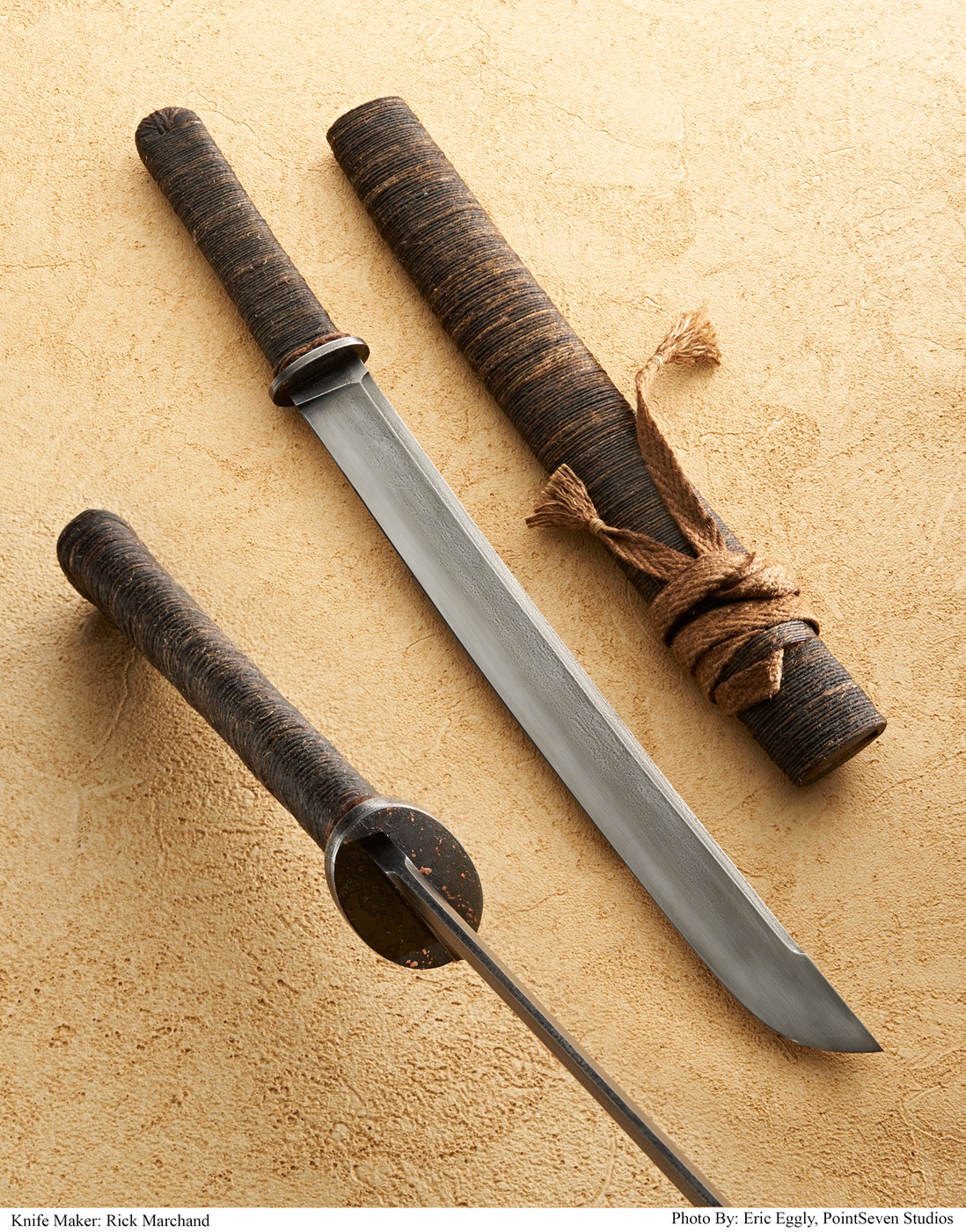Richard338
Gold Member
- Joined
- May 3, 2005
- Messages
- 7,236
A question or request for suggestions about the cross section (basic grind) of a katana.
@stacy
I started grinding the bevels on my katana yesterday.
36" OAL, 27" blade, 3/16" CPM 3V, pure stock removal.
I had previously done the profiling and now started the bevels.
I started cautiously with an 80 grit belt, and tried sliding it across the rest for each pass.
This didn't work so well, and I ended up free-handing across the platen like an overgrown knife.
I also switched down to 36 grit and found it easier to be smooth while removing most of the material. After about an hour I got into a groove and felt pretty smooth. I haven't ruined anything yet.
I have seen some variations in the grind cross section and wonder which I should go after.
I have been working on a flat grind about 3/4 height. After HT I planned to convex it toward a zero edge. I also plan to have a peaked spine, like a shallow angled roof, that I see in most of the pictures.
My question is this: should I try to have a crisp transition between the bevel and the flat at 3/4 height (difficult to keep perfectly even down the length of the blade). Or should I blend that into a full-height convex. I have seen both in pictures. For me I think blending and convexing the whole thing would be a lot easier...
@stacy
I started grinding the bevels on my katana yesterday.
36" OAL, 27" blade, 3/16" CPM 3V, pure stock removal.
I had previously done the profiling and now started the bevels.
I started cautiously with an 80 grit belt, and tried sliding it across the rest for each pass.
This didn't work so well, and I ended up free-handing across the platen like an overgrown knife.
I also switched down to 36 grit and found it easier to be smooth while removing most of the material. After about an hour I got into a groove and felt pretty smooth. I haven't ruined anything yet.
I have seen some variations in the grind cross section and wonder which I should go after.
I have been working on a flat grind about 3/4 height. After HT I planned to convex it toward a zero edge. I also plan to have a peaked spine, like a shallow angled roof, that I see in most of the pictures.
My question is this: should I try to have a crisp transition between the bevel and the flat at 3/4 height (difficult to keep perfectly even down the length of the blade). Or should I blend that into a full-height convex. I have seen both in pictures. For me I think blending and convexing the whole thing would be a lot easier...

